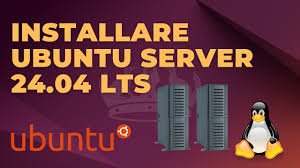Creare una blockchain con gestione delle transazioni e rete peer-to-peer in PHP è un'impresa molto più complessa rispetto all'esempio base di blockchain che ti ho mostrato prima. In questa configurazione, dovremo implementare funzionalità aggiuntive come la creazione e verifica delle transazioni, nonché la comunicazione tra nodi in una rete decentralizzata. Di seguito ti fornirò una struttura di base e alcune idee su come potresti avanzare in questa direzione.
Passo 1: Definire la classe Transaction
Prima di tutto, definiamo cosa intendiamo per "transazione". Una transazione avrà un mittente, un destinatario e un importo.
class Transaction {
public $from;
public $to;
public $amount;
public function __construct($from, $to, $amount) {
$this->from = $from;
$this->to = $to;
$this->amount = $amount;
}
}
Passo 2: Modificare la classe Block per gestire le transazioni
Il blocco ora dovrà contenere una lista di transazioni anziché dati generici.
class Block {
public $nonce;
public $timestamp;
public $transactions;
public $previousHash;
public $hash;
public function __construct($transactions, $previousHash = '') {
$this->transactions = $transactions;
$this->previousHash = $previousHash;
$this->timestamp = time();
$this->nonce = 0;
$this->hash = $this->calculateHash();
}
public function calculateHash() {
return hash('sha256', $this->previousHash . $this->timestamp . json_encode($this->transactions) . $this->nonce);
}
public function mineBlock($difficulty) {
while (substr($this->hash, 0, $difficulty) !== str_repeat("0", $difficulty)) {
$this->nonce++;
$this->hash = $this->calculateHash();
}
echo "Block mined: " . $this->hash . "\n";
}
}
Passo 3: Aggiungere la comunicazione peer-to-peer
Per aggiungere funzionalità peer-to-peer, avrai bisogno di una sorta di server HTTP o di un'interfaccia socket per permettere ai nodi di comunicare tra loro. In PHP, potresti usare librerie come ReactPHP o Ratchet per gestire connessioni WebSocket o server HTTP asincroni. Qui ti mostro un semplice esempio di come potresti configurare un server HTTP per la tua blockchain:
require_once 'vendor/autoload.php';
use React\Http\Server;
use Psr\Http\Message\ServerRequestInterface;
$blockchain = new Blockchain();
$server = new Server(function (ServerRequestInterface $request) use ($blockchain) {
$path = $request->getUri()->getPath();
if ($path === '/blocks') {
return new React\Http\Message\Response(
200,
array('Content-Type' => 'application/json'),
json_encode($blockchain->chain)
);
} elseif ($path === '/mine') {
$data = json_decode((string) $request->getBody(), true);
$blockchain->addBlock(new Block($data['transactions']));
return new React\Http\Message\Response(
201,
array('Content-Type' => 'application/json'),
json_encode($blockchain->getLastBlock())
);
}
return new React\Http\Message\Response(
404,
array('Content-Type' => 'text/plain'),
"Not Found"
);
});
$socket = new React\Socket\Server('127.0.0.1:8080', $loop);
$server->listen($socket);
echo "Server running at http://127.0.0.1:8080\n";
$loop->run();
Conclusione
Questo codice serve solo come punto di partenza e può essere notevolmente ampliato. La gestione della sicurezza, della verifica delle transazioni, della prova di lavoro e della sincronizzazione tra i nodi sono solo alcune delle sfide che dovrai affrontare sviluppando una blockchain funzionante. Inoltre, considera che PHP non è tipicamente scelto per applicazioni di rete peer-to-peer a causa delle sue limitazioni in termini di esecuzione asincrona e di prestazioni in tempo reale; linguaggi come JavaScript (con Node.js), Python o Go sono generalmente più adatti per questo tipo di applicazioni.

 Like
0
Like
0
 Cancella like
0
Cancella like
0
 Amore
0
Amore
0
 Buffo
0
Buffo
0
 arrabbiato
0
arrabbiato
0
 Sad
0
Sad
0
 Wow
0
Wow
0













